

Pharmaceutical manufacturing facilities adhere to strict quality, safety, and regulatory standards. Among the critical components within these facilities are pipe racks, which transport a range of fluids integral to drug production. Regular inspection and maintenance of these pipe racks are imperative to prevent leaks, contamination, and costly production downtime. Traditional inspection methods are often labour-intensive, time-consuming, and pose safety risks to personnel. This case study demonstrates how drones can augment pipe rack inspections thereby enhancing safety, efficiency, and cost-effectiveness.
The client needed to inspect the upper surfaces of various pipe racks distributed across a medium sized pharmaceutical plant. The traditional method of performing this work was to use a MEWP. Due to the condensed nature of the pipes and infrastructure at this particular site using an MEWP would only allow a limited number of pipes ot be inspected. The only traditional way around this was to climb on the pipe racks themselves where permissible. The issue with ths is it resulted in damage to pipe insulation and of course there is also a signifiant increase in the risk involved. For this reason the client asked us to see if we could perform the same level of inspection using a drone.
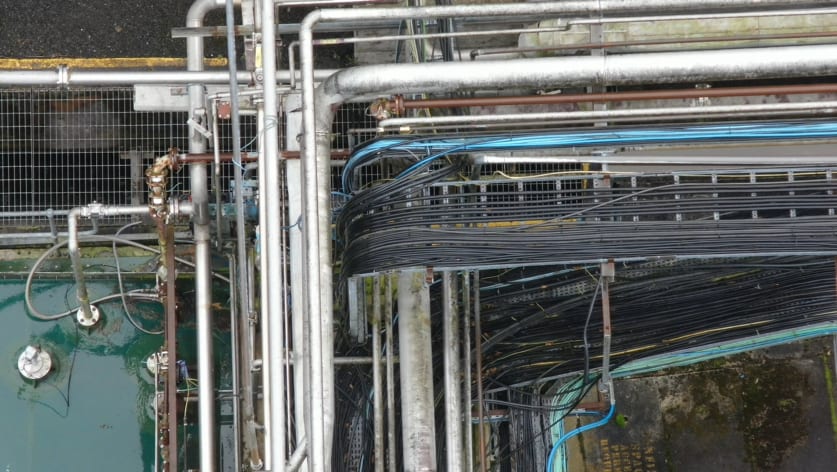
The first step with this work is to define a clear objective: The inspection aims to identify any structural issues, leaks, or anomalies in the pipe rack system to ensure the plant's integrity and regulatory compliance. THis is to be done ins a safe and efficient manner.
The next step in any successful inspection job is planning. For this job we started by reviewing the Inspection Scope: Our aim was to Understand the scope of the inspection by focusing on specific areas of concern or points of interest within the pipe rack system. This along with an overall data capture plan ensured we got the maximum level of coverage and detail required to complete the inspection.
After that we reviewed the relevant regulations and Permits. We had to ensure we were compliant with local aviation regulations and obtain any required permits for flying a drone in the area. As it happened on this particular day there was a signifiant airspace restriction in place from mid afternoon onwards. This meant we had to start the work as early as possible to ensure completion before the airspace restriction came into effect.
Finally closer to the planned date we monitored weather conditions to determine if they are suitable for the drone inspection. We wished to avoid conducting inspections during adverse weather, such as high winds or heavy rain.
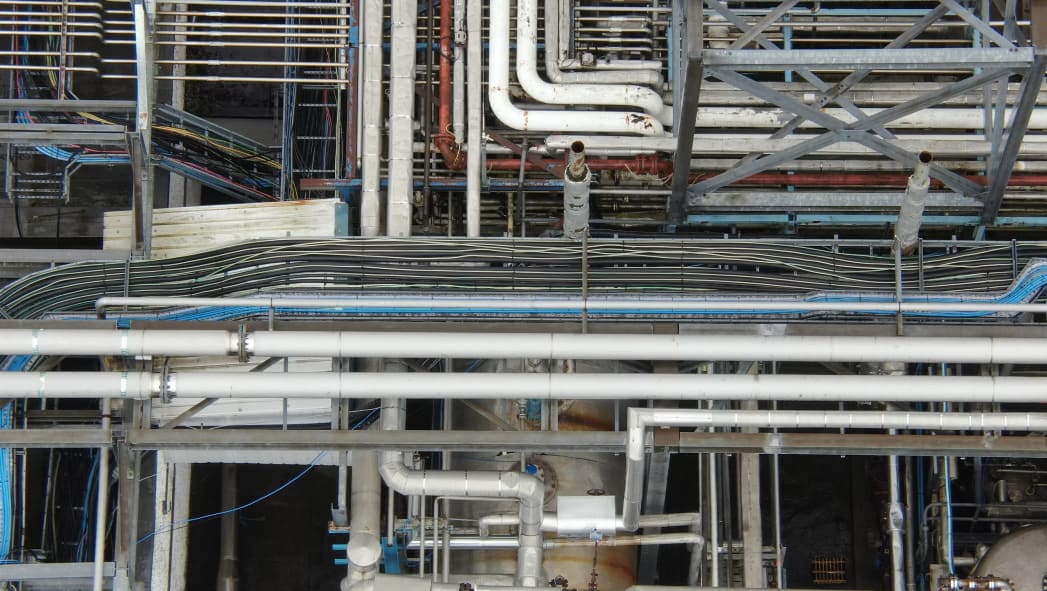
There were two major considerations when selecting a drone for this work. The first was the requirement for a drone with a high optical zoom lens camera. This allows the operator to well above the pipe racks while at the same time getting excellent detailed imagery of any potential defects. THe other important capability that was needed was a thermal camera. This capability allows the operator to "see" otherwise invisible leaks of hot and cold fluid and and gasses from pipes. For this job we selected to use the DJI M300 with the Zenmuse H20T payload. This payload features a thermographic camera which allowed us to "see" the hot gasses in real time and so keep the drone at a safe distance from them.
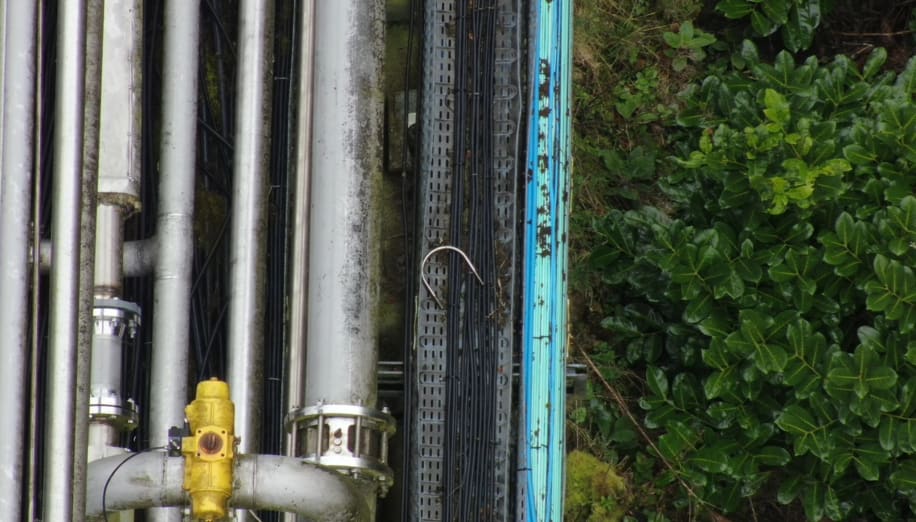
For this work we established a no-fly zones and safety zones to prevent unauthorized access and ensure the safety of personnel on the ground. IN the language of the drone legislation this area is called "controlled ground" and is defined as "the ground area where the UAS is operated and within which the UAS operator can ensure that only involved persons are present".
When operating certain types of drones it is important to establish a controlled ground area. Not only is this required by law but it also signifigantly increases safety and reduced risk.
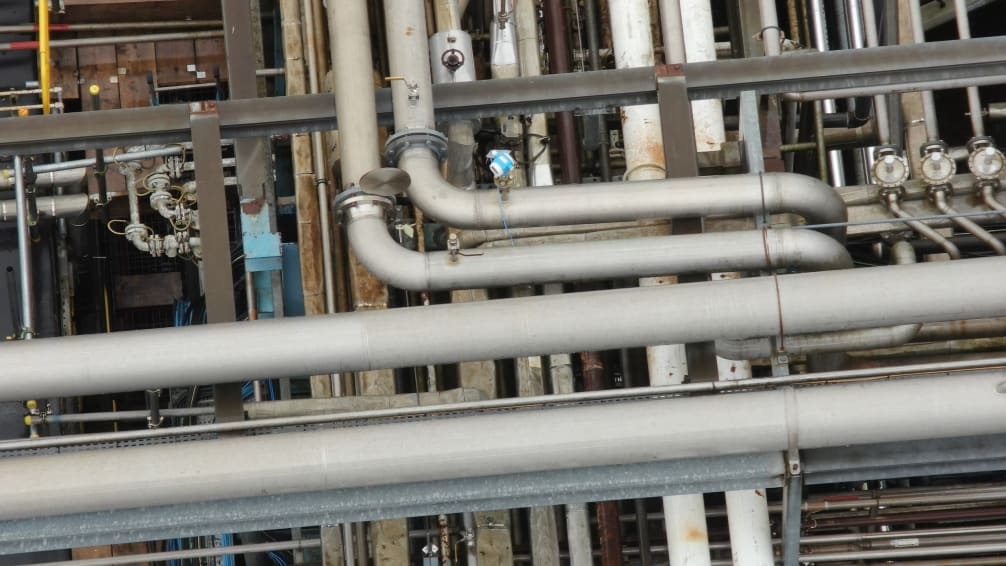
The following is typical of the inspection plan for inspecting a pipe racks using a drone:
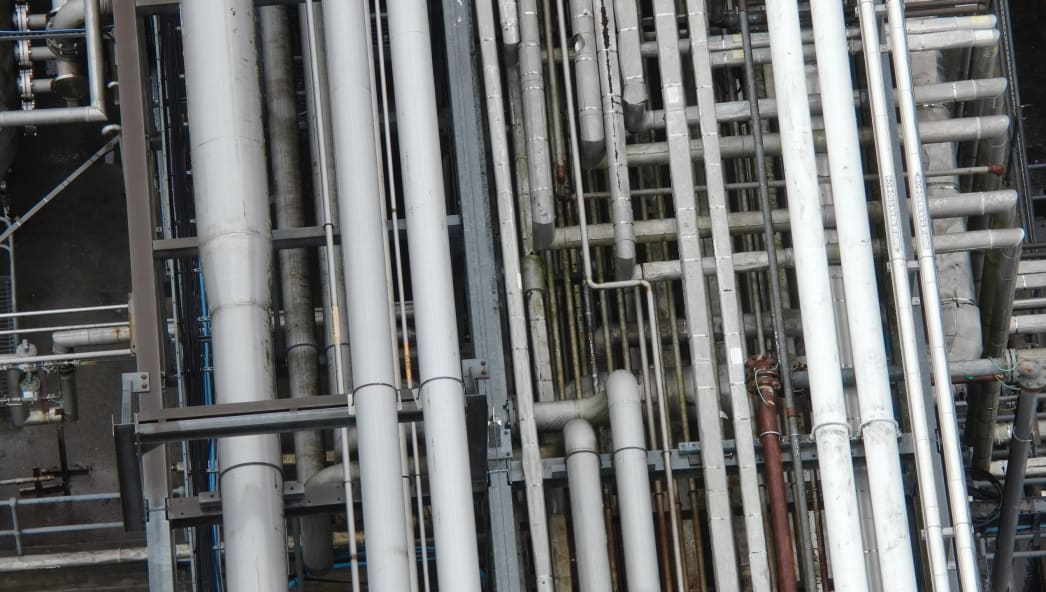
Below is a list of items we typically see when inspecting a pipe rack.
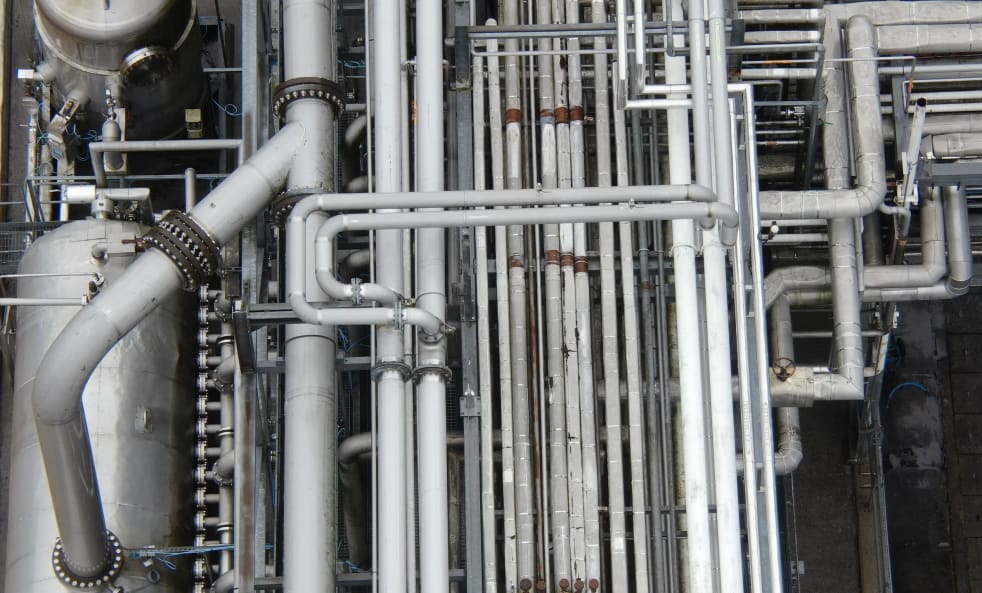
Below is a list of the types of defect that can be detected when conducting an inspection of a pipe rack using a drone.
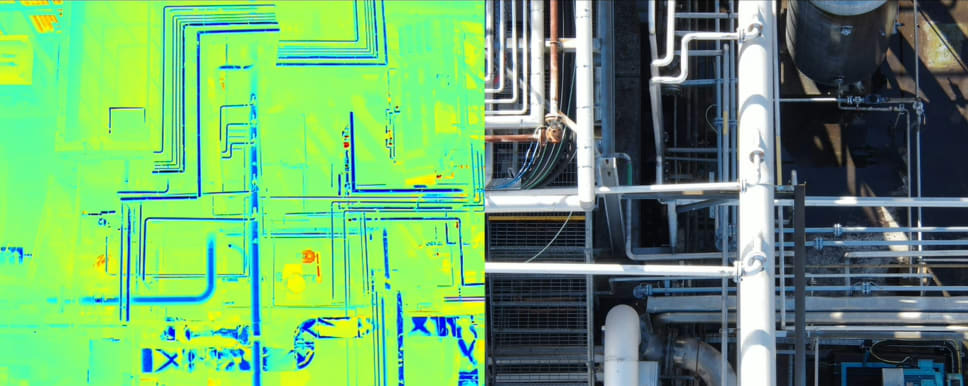
The pharmaceutical plant's decision to harness drone technology for pipe rack inspections has been nothing short of transformational. By amplifying safety, efficiency, and data accuracy, the plant not only adhered to stringent regulatory requirements but also bolstered overall operational effectiveness. This case study underscores the potential of embracing innovation to usher in significant improvements within the pharmaceutical manufacturing industry, setting a precedent for other facilities seeking to modernize their inspection processes.
For this job the following deliverables were requested and generated for the client.
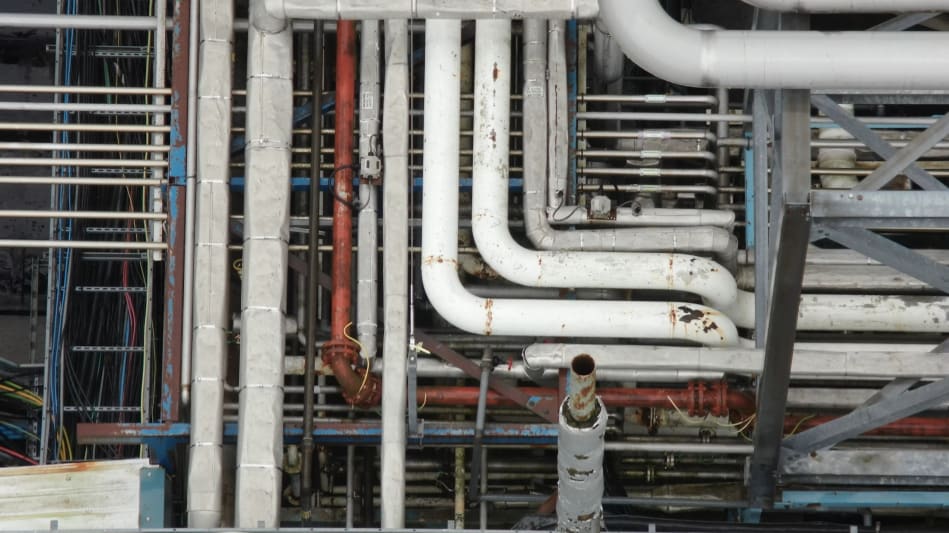
You can find out more about our pipe line and pipe rack inspections. Alternatively you can contact us here.
Last Updated: 04 July 2023